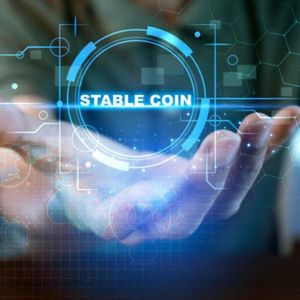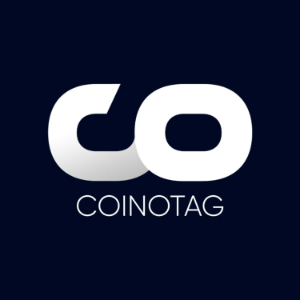Fiserv’s FIUSD And PayPal’s PYUSD: Expanding Stablecoin Payments Together
7 min read
Summary Fiserv, Inc. and PayPal Holdings, Inc. are launching and integrating their own stablecoins (FIUSD and PYUSD), aiming to modernize payments and defend market share. Both firms leverage Circle Internet Group’s infrastructure to scale quickly, with Fiserv’s network offering instant reach to banks and merchants worldwide. Valuations remain elevated, especially for FI stock; PYPL stock looks more attractive relative to its own history, but neither is a bargain versus peers. Stablecoins offer long-term potential, but don’t expect immediate revenue impact—invest for the overall business, not just the blockchain headline. Introduction Today’s announcement is a pretty big deal for everyone who is following how the old-school payments are trying to be changed and dragged into the digital dollar era. Fiserv, Inc. ( FI ), which is not exactly a household crypto name, just confirmed it’s launching its own stablecoin, FIUSD. At the same time, PayPal Holdings, Inc. ( PYPL ) is making sure its own stablecoin , PYUSD, works hand-in-hand with Fiserv’s. Both stocks jumped after the news came out, and now everyone’s trying to figure out what this means, whether it’s worth paying attention to, and if there’s actual money to be made here beyond this quick jump. So, What Actually Happened? Fiserv came out this morning and said they are getting ready to launch FIUSD, their own digital dollar token, by the end of this year. Now, a stablecoin is exactly what it sounds like: a digital version of money that’s pegged 1-to-1 to something stable (usually the U.S. dollar), so the price of it doesn’t get thrown around so much as Bitcoin (BTC-USD), for example. The idea behind this is pretty straightforward. Companies that launch these coins say that payments today are usually slow, we pay a lot of fees, and the whole world depends on the “old” banking system, with banks not being open 24/7, so all of these are inconveniences. A stablecoin basically lets money move instantly, without waiting for banks, and it stays connected to the dollar, so you don’t wake up and find your $100 turned into $60 overnight, like with some crypto coins. The good news is that Fiserv is already processing payments for nearly 10,000 banks and about six million shops. This means FIUSD won’t be some test run with a few pilot users. It’s going straight into the system that already has about 90 billion transactions a year: Offering FIUSD across the company’s global multi-sided network, which includes relationships with approximately 10,000 financial institution clients and six million merchant locations processing 90 billion transactions annually, will provide instant scale for FIUSD while creating a digital asset network that clients can use to build new products and services To make this work without reinventing the wheel, Fiserv partnered with Circle Internet Group, Inc. ( CRCL ) and Paxos (both are big names in the stablecoin world). These companies will take care of the stablecoin infrastructure for Fiserv, so the company itself won’t build it. Everything will run on Solana, which is just a newer, cheaper, and faster blockchain compared to older ones like Ethereum. How Does PayPal Fit In? PayPal’s had PYUSD for a while already. Same idea, take a stablecoin and get it into regular payments, not just leave it sitting in crypto wallets. What’s new now is that PayPal and Fiserv announced that FIUSD and PYUSD will work together now , and not against each other. If you run a business or just send money, you won’t care which one you’re using, you won’t even know it: The two companies will strive to identify key opportunities for integrating FIUSD and PYUSD into payment flows, including cross-border transactions, payouts, and merchant solutions. Once again here they brought in Circle to handle a big part of the infrastructure. Circle already has the tech and experience with stablecoins like USDC, so instead of Fiserv or PayPal building every piece from the beginning and figuring out how it works, they simply use Circle’s ready system and focus on getting banks and merchants comfortable with using it. They’re planning to roll out in stages, but to fully commit to the new rules Congress just approved for stablecoins. And it’s actually not surprising to get the news now, right after the law came out. Up until now, nobody wanted to risk pushing stablecoins too far without knowing if the government might ban or restrict them later. Now that everything is resolved, they got a green light to move, and they are not wasting any time. Why They’re Doing This For Fiserv, adding a stablecoin is a way to maintain its position on the market. They want to make sure they don’t find themselves in the situation where a new fintech is offering instant payments while they’re still charging old fees and using outdated tech. They are launching FIUSD and putting it straight into their network, and by this, they’re giving their clients an upgrade without changing the system. PayPal’s thinking is similar but a bit different. PYUSD has been around, but until now, it’s mostly sat in the crypto corner. This new deal pushes it into real payments where actual people and businesses can use it, not just traders moving coins back and forth. How it will work awaits to be seen, but anyway, the outlook is currently positive. Besides, this is a defensive move of a kind. Big traditional payment companies know that if they don’t build this themselves, smaller fintechs or crypto firms will. Stablecoins potentially could change how we interact with money. The borders won’t matter, and many middleman fees will be taken out of the equation. So by creating their own tokens and implementing these tokens into regulated, familiar payment systems, Fiserv and PayPal are not giving customers a chance to try out some risky crypto startup. And why would customers want it anyway? They get the same perks, but from brands they already trust. Are The Stocks Cheap Or Expensive After This News? Now, a quick reality check. Both Fiserv and PayPal stocks jumped this morning on the news, Fiserv gained over 7% but pulled back later, which is a sign the market likes the direction, but investors are not in a rush to throw their money at it. The reason is simple. Both Fiserv and PayPal still trade at higher valuations than a lot of other companies in their space. If you look at something simple like price-to-earnings, Fiserv is sitting at about 20.7 times forward earnings, which is around 85% higher than the sector average, so you’re paying extra. FI Valuation (Seeking Alpha) PayPal’s forward P/E is about 14.2, which is also higher than the sector median but quite a bit lower than where it used to be a few years ago when everyone treated it like a high-growth tech stock. So they’re not cheap in the sense of “undervalued vs. peers,” but they’re much cheaper compared to their own past hype years. PYPL Valuation (Seeking Alpha) The real question is whether this stablecoin news actually brings in enough new revenue to make that premium worthwhile. Personally, I don’t see this adding huge money in a second. This is more about showing investors they’re progressing, and covering different angles (especially PayPal), and that they are ready to lead IF regulated digital dollars start to spread. If stablecoins really do become the standard way to move money across borders and settle payments instantly, then Fiserv and PayPal will beat everyone in this game. But I have left “if” twice in the last two sentences unpurpose. This is way too early to predict how it will play out for both companies, but by the valuation, PayPal looks much more attractive than Fiserv. Conclusion This doesn’t suddenly change the whole business for either of the companies overnight. The real question is how fast Fiserv can actually roll out FIUSD and whether banks and merchants will start using it at scale. A good press release is the easy part, but making it work across that many institutions is much harder. For PayPal, it’s about proving that PYUSD isn’t just a crypto side project but something people actually could use in daily transactions, not just hold in a wallet and forget about, which is a step forward, but once again, it depends on the demand from the customers. I’d also keep watching what regulators do next. Yes, we finally have a stablecoin framework in the U.S., which helps a lot, but that doesn’t mean it’s all set in stone. Things could still change, especially now, in this volatile environment, and any surprise changes could slow adoption or make it harder for these companies to scale the way they want. If you’re thinking of investing because of this news, just keep your expectations realistic. Both companies are strong players in modernizing how money moves. But the stablecoin angle is still just one layer on top. It’s interesting, it has long-term potential, but it’s not something that will bring in some meaningful value short term. If you’re buying either stock, buy it for the business as a whole, not just because they said “blockchain” this week.

Source: Seeking Alpha



